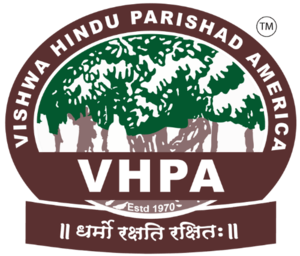Like most Americans the only thing I knew about Guyana is that a very tragic event transpired some 40 years ago in the jungle that featured a megalomaniac Christian preacher. There is a saying that we in the US can’t locate a country on a map until our military bombs it.
Among all the things I learned over the past few years was that Guyana had a sizable Hindu population. Thankfully, attending the annual Hindu Mandir Executive Conference in Trinidad some years ago resulted in a serious offer to visit. The trip would be sponsored by a few Guyanese groups, along with my advocacy organization, The Hindu American Foundation (HAF), where I sit on its National Leadership Council. (HAFSITE.ORG) Though the A in HAF specifically indicates “America,” the board and staff agreed that we must not dismiss such sizable populations in close proximity.
The scenery in Guyana is awesome but it is the people that really make the lasting impressions. I was immediately overwhelmed with great kindness and hospitality.
The 1st few of my 9 days were spent at The Social Services Center of Excellence in Woodley Park, WCB. This was founded by pandit and educator, Ram Rattan who currently spends most of his time in Florida, but continues to maintain a presence in Guyana. This is truly a jewel of a place, offering classes for social and individual improvement. Sri Ramji was kind enough to provide me with a room and all meals when he learnt the purpose of my trip. He even joined me for several of the lectures I gave in that general area.
Since so many Indians who became indentured in Guyana were from Uttar Pradesh, my experience allowed me to sample new tastes—served on lotus leaves.
One breathtaking trip was the ferry from Parika to Essequibo. Everything about it—the water, passing the beautiful islands, and the wonderful breeze all contributed to feeling of great content.
Guyana has absolutely stunning homes. What impresses most is the originality of the designs and architecture. All the houses are unique, unlike our dull subdivisions. I know that Guyana is not a “rich” country, but everyone in US with whom I shared my photos would like to visit. I saw many inspiring temples outstanding among which was the one at Gay Park, overseen by female Pandita Srimati Maraj. Our guide for the day, generous and always willing to help, Rudy Ram Persaud (who has since passed away) made sure that we visited the site where indentured servants first landed in 1838.
I would encourage Hindus from the US and India alike to take a lesson from the way pujas and yagnas are conducted in Guyana. We spend too much time in rituals that few can understand, but in the land of endless summer the rituals are briefer. There is always an accomplished
harmoniumist and percussionist. The power of bhajans creates an atmosphere of true bhakti. The Katha delivered by the pundits is the center of attention. Drawing from the stories of the Ramayana (mostly) they engage the devotees in a way that I don’t often see in standard American Hindu temples. There are exceptions here, but they are rare.
At US temples people overindulge in socializing. In my home temple, it is sad that devotees have to be constantly told to stop talking. However, at a yagna with over 500 in attendance at Hampton Court on the Essequibo Coast all eyes and ears were on presiding pandit Lalaram from the Bath Settlement, Berbice. They were also very kind to me when I was asked speak.
Visiting and staying with Swami Aksharananda allowed me to speak for an entire day to the students at Saraswati Vidya Niketan, a private Hindu School at Cornelia Ida. The behavior of the children, their rigorous schedule and the quality of the teachers all contributed to its status of one of the best in the country. If we could import that level of academic professionalism to the US we would have a greater nation. Fixed in memory is a trip to the Stabroek Market, where I was able to purchase a beautiful gold necklace from the most venerable jewelry merchants in Guyana. I was warned that this was not the safest place for a white foreigner; but I was fortunate to have Swami with me.
The purpose of my trip was to investigate the challenge that the Hindu community is dealing with what we call predatory conversion. While acknowledging the sanctity of a person’s decision to move from one religion to another, we know that some religious groups use methods on individuals and communities to persuade them to adopt a religion they wouldn’t normally join if not for pressure. This coercion can come in the form of bribery, medical aid, professional gains, denigrating Hindu deities and traditions, etc. I saw with my own eyes a Christian woman tell a child no older that 10 that her Hindu deities were demons. It was thought that a white American who did in fact leave his birth religion of his own accord to embrace Dharma might have a positive impact on the devotees who have to deal with ideas of superiority that the European explorers took with them to their colonies. In my conversations with retired lawyer and Guyanese-Canadian writer, Ram Sahadeo we discussed a lecture tour I completed back in 2005 when I crisscrossed much of India’s northeast states, speaking at local temples, schools and public venues in an attempt to resist the rampant predatory conversion practices there. There seemed to be much interest in our mission in Guyana. Several good connections were made and many ideas were discussed but much more coordination is needed to combat this problem using the Gandhian principle of Ahimsa.
Summary
There really is a serious problem of predatory proselytism in Guyana. No one is able to give a definite count, but everyone seems to be able to agree with the assessment.
While Hindus are challenged there by missionaries, it appears that the Hindu Dharma is still quite vital. The young pandits conduct services are doing wonderful work. The pujas are performed in a traditional way that is much more engaging. US mandirs that are run by mostly 1st gen Indian-Americans can learn some things from them.



![[ India Today ] Ohio senator JD Vance thanks wife, a Hindu, for helping him find Christian faith](https://hinduvishwa.org/wp-content/uploads/2024/06/us-senator-jd-vance-reveals-how-his-hindu-wife-usha-helped-him-find-his-christian-faith-image-re-272530504-16x9_0-120x86.webp)










